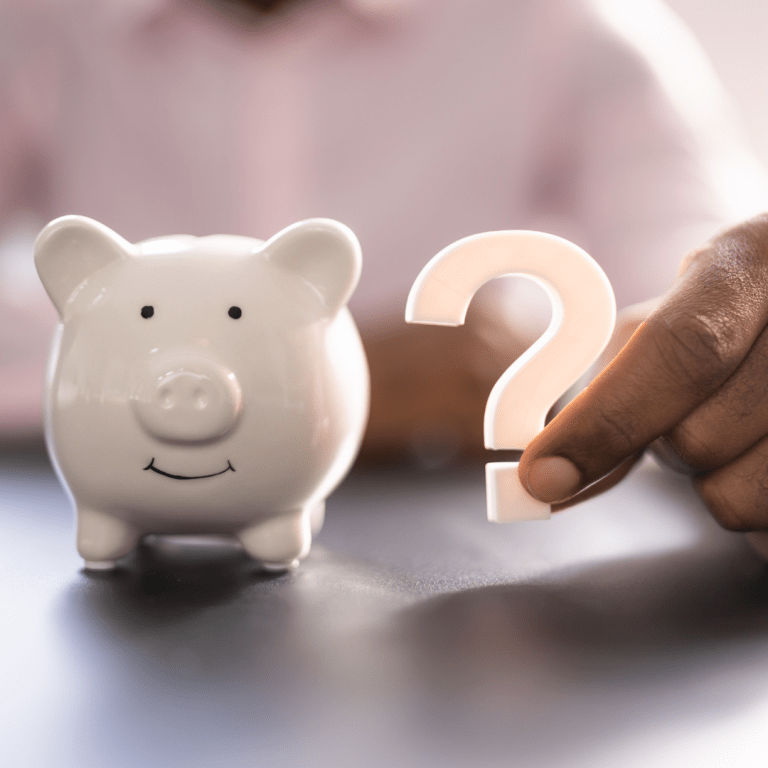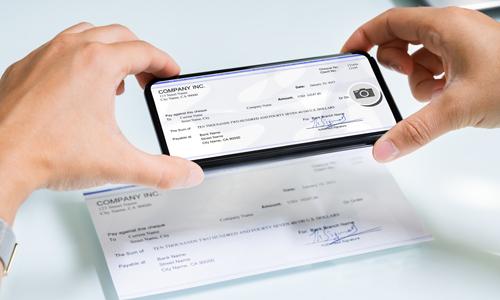A checking account is where most of us receive our income. Safer than stashing cash under the floorboards, a checking account offers fast access to cash, debit cards, and more sophisticated banking options like automatic bill payments, mobile check deposits, and remote banking.
Knowing how much money to put in your checking account can be a tricky balancing act. If you put too little, you risk overdraft fees or bounced checks. But if you put too much, you may miss out on earning interest from a high-yield savings account or certificate of deposit (CD).
Here are some things to consider when trying to find the right balance on your checking account.
What to Know About Your Checking Account
The case for a checking account is simple: it offers quick access to cash so that you can handle everyday transactions. But the downside of a checking account is that the money deposited typically does not earn interest—and if it does, the interest rate is generally low. This means the money left in checking won’t keep up with the rate of inflation.
Most checking accounts offer close to zero percent interest. As of October 2024, the national average rate for checking accounts was 0.07%, according to the FDIC, while the rate of inflation was 2.4% in September 2024. That means that money in a checking account loses value over time.
Some checking accounts may offer a higher interest rate, but it’s important to check the requirements (i.e., do all balances earn a high APY or is there a cap? Are there other requirements to earn the amount?). These will be important factors to consider when trying to decide how much money to keep in your checking account. If, for instance, your checking account pays a competitive rate up to $5,000; you benefit from a great rate on a highly liquid account. If the interest rate falls after that cap of $5,000, you may want to consider moving those additional funds to a different savings vehicle that earns more competitive interest.
How Much Money Should You Keep In Your Checking Account, And Why?
According to the Federal Reserve Board’s Survey of Consumer Finances, released in October 2023, the median household’s checking account balance was $2,800. The amount that’s right for you depends more on your budget and monthly expenses, however.
Most experts recommend that you keep a balance at all times that equates to one or two months of living expenses. For example, if you spend $6,000 a month in bills and living expenses, you might want to keep a balance of $6,000 to $12,000.
The reason you should have a solid cushion in your checking account is to avoid NSF and overdraft fees. Overdraft fees averaged $27 per overdraft in 2024, according to Bankrate—and can impact your ability to open new checking/savings accounts in the future. And you’ll incur an NSF fee if you don’t have overdraft protection and you write a check or conduct a debit card transaction that exceeds your available balance. While these fees alone won’t damage your credit score, failing to pay them promptly or missing other bill payments due to insufficient funds can damage your credit.
You also should be aware of the minimum required balance your institution requires. If you fall to keep enough cash in your checking account to meet this minimum, you may get hit with a monthly maintenance fee.
Track your expenses for a month or two to make sure you are keeping enough of a buffer in your checking account. Keep a daily spending log and include all of your cash, debit card, and credit card purchases. Be sure to also include any subscriptions you pay for, gym membership fees, and loan payments. Add them all up and use this base number to calculate how much you’ll need to keep in your checking account.
Where Should You Put Extra Cash and Why?
While having too little in your checking account comes with the immediate risks of overdraft fees and missed bill payments, having too much in your checking account can also lead to problems. After all, money that sits in your checking account isn’t gaining interest. But where should you put this extra money?
The first place to put extra money is into an emergency fund. An emergency fund ensures you can meet expenses in the event you face an unexpected financial event. Most experts recommend saving at least three to six months’ worth of expenses in a high-yield liquid savings account so that you can access your funds in an emergency, while still ensuring they earn a high rate of return.
If you still have cash left over each month once you have paid your bills and built or replenished your emergency fund, the rest of your income can go to assets that will generally earn a higher interest rate.
Consider Certificates of Deposit (CDs) or Term Accounts, Money Market Accounts (MMAs), and other investments like stocks, real estate, and 529 education plans.
High Yield Savings Accounts (HYSAs)
Mentioned above for an emergency fund, high-yield savings accounts (HYSAs) offer liquidity and higher interest rates than standard savings accounts. Rates vary from institution to institution. Many currently offer interest rates over 4%, which comfortably outpaces inflation. Given the high rates and liquidity, many people choose to put their emergency fund in a HYSA.
Term Accounts (Similar to Certificates of Deposit, or CDs)
A term account is another popular way to save. Term accounts offer impressive interest rates, but with one catch: you can’t touch the money until the end of the term. Terms vary, from three-month term accounts to five-year term accounts. Longer terms generally come with higher interest rates. A long-term account can be a great option for a long-term financial goal, like saving for a home. And a short-term account works well for short-term goals, like saving up for a wedding.
Money Market Accounts (MMAs)
A money market account (MMA) is a sort of middle ground between a checking account and savings account. Typically, they come with higher interest rates than a standard checking account, while still offering easy access to your cash. These accounts usually come with a minimum balance amount, which will vary from institution to institution.
Investments
Wealth management experts recommend diversifying your investments, which means spreading your assets across sectors and asset types to lower risk. Some assets will be higher risk than others and have the chance to bring either high returns or steep losses.
For example, bonds are generally considered low risk, with fixed, predictable returns. Stocks introduce a bit more risk due to the ups and downs of the market. A stock price can swing wildly due to certain company news. Many financial experts suggest purchasing index funds, which control for these risks by offering a wide spectrum of different stocks.
A financial advisor or wealth advisor is the best person to advise you on how to allocate your funds to build wealth and save for retirement. A retirement plan and how you invest should be based on many factors, including your age, how much you have to invest, your risk profile, and your current financial situation.
Allocating Your Funds to Checking Accounts, Savings Accounts, and Investment Assets
Figuring out how to allocate funds between different bank accounts isn’t always simple. But getting it right ensures you have enough on hand to cover expenses while still earning interest. Ultimately, there isn’t one clear correct answer for everyone. No matter what you choose, the first step is understanding your current finances, regular expenses, and long-term financial goals. Then you’ll be ready to start allocating wisely — and putting your money to work.






Comments Section
Please note: Comments are not monitored for member servicing inquiries and will not be published. If you have a question or comment about a Quorum product or account, please visit quorumfcu.org to submit a query with our Member Service Team. Thank you.